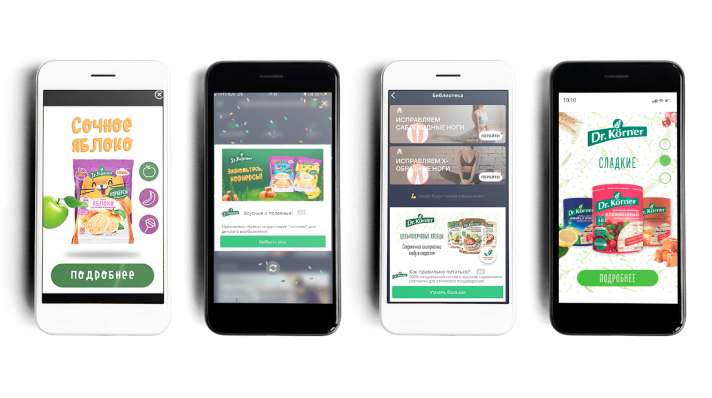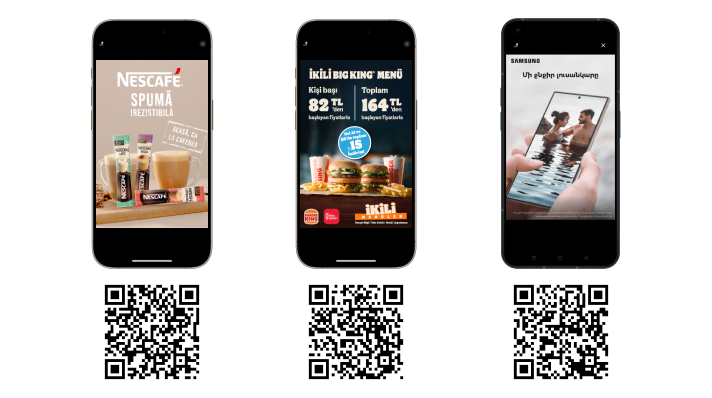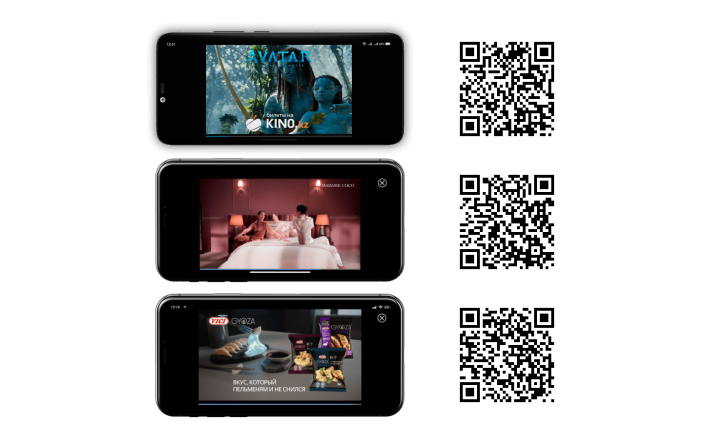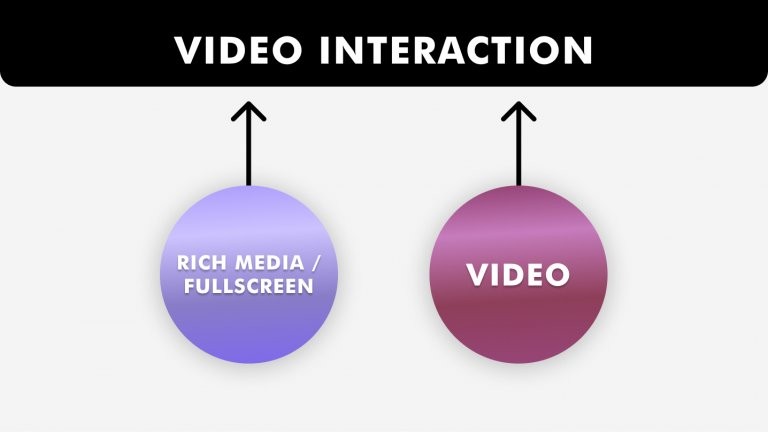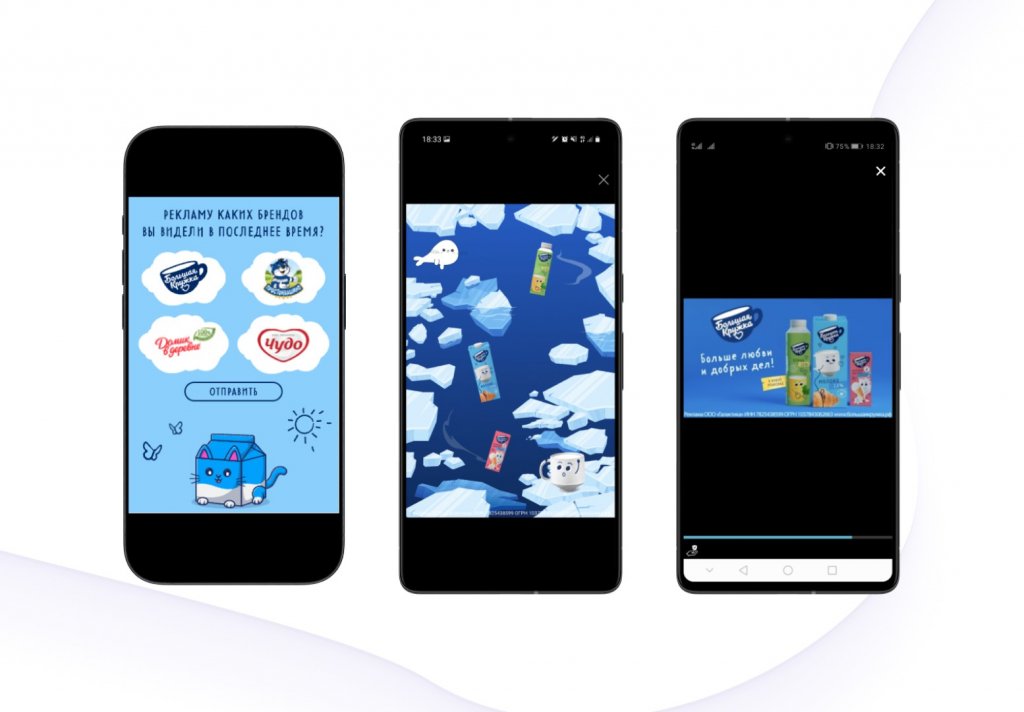3 Key Mobile Advertising Formats for Successful Promotion
Mobile advertising plays a key role in brand promotion. According to Statista, by 2024, spending on mobile ads is expected to reach $400 billion, accounting for more than 60% of total digital ad revenue. This growth is driven by the effectiveness of mobile advertising and the variety of available formats.
To avoid difficulties in choosing the right type of mobile advertising, let’s explore three main formats, their features, and practical examples of their use.
Mobile Advertising Formats
Each advertising format has its own advantages and disadvantages. These factors should be considered when planning in-app promotion.
Among the most popular formats are:
- Static Banners
- Rich Media Banners
- Video
Static Banners
Static banners are images or graphic ads that lack animation and interactivity. They are displayed in various sections of the mobile device screen.
Static banners usually come in a network of different sizes, with the most popular being fullscreen and native banners.
Fullscreen Banner
A fullscreen banner is an ad format that occupies the entire screen of a mobile device while viewing content or navigating between pages in an app.
Advantages of Fullscreen Banners:
- Maximum Visibility: Filling the entire screen, these banners capture the user’s attention.
- Attractive Design: The large screen area allows for the use of bright colors and appealing designs.
- Informative: Enables the display of essential information concisely.
Ad spending in the Banner Advertising market is projected to reach US$174.4 billion in 2024. Fullscreen banners, a key format in this market, are versatile tools that draw attention to products and events.
They are especially effective in retail, pharmaceuticals, FMCG, and the automotive industry. This makes fullscreen banners ideal for showcasing products or services and inviting users to events, offering a powerful option for your advertising strategy.
Native Banner
Native banners are an ad format that seamlessly blends into the user interface of an app, matching its style and content.
Features of Native Banners:
- Seamlessness: They look like part of the content and do not disrupt the user experience.
- Effectiveness: Their natural integration typically increases engagement and click-through rates.
- User Loyalty: Native banners maintain the integrity of the interface, helping to build user loyalty.
Native banners are ideal for large brands that prioritize visibility and memorability. Data confirms that 90% of leading publishers use native advertising.
Brands report that these creatives facilitate natural interactions with the audience, drawing attention to products and boosting engagement through contextual suggestions.
Rich Media Banners
Rich Media banners are an interactive ad format that uses various multimedia elements such as animation, video, audio, and even gaming features.
Features of Rich Media Banners:
- Multimedia Elements: These elements help capture attention and create a unique experience.
- Measurable Results: The format offers a wide range of metrics for tracking the effectiveness of the ad campaign.
- More Space for Messaging: Rich Media banners provide more space to convey information about a product or service, allowing a fuller and more visual presentation to the audience.
Rich Media banners are used for various purposes depending on the type of interactivity employed. For example, sliders are effective for showcasing a product, while gamification is useful for attracting traffic. Interactive mechanics can be combined to achieve multiple goals simultaneously.
Our production department creates creative solutions for mobile advertising, offering a personalized approach. Examples of successful campaigns with Rich Media are available via the link.
Video
Video is a way to capture the audience’s attention through the use of video clips.
Features of the video format:
- High Engagement: Video is the most popular type of content. 92% of users prefer watching videos on any topic over other types of information.
- Wide Audience Reach: Mobile devices are always at hand, so video advertising can reach a broad audience anytime and anywhere.
- Ability to Tell a Story: Videos allow brands to tell cohesive stories about their products, creating a deep connection with consumers.
Video Interaction Format
Recently, the format of video interaction, combining video with Rich Media or fullscreen banners, has been gaining popularity.
How interactive video advertising works:
- The user enters the mobile application.
- The brand’s video advertisement appears.
- After watching the video, the user sees a Rich Media banner or a fullscreen banner for interaction.
Since interactive video advertising combines two formats, it encompasses all their features and benefits, providing a wealth of data for tracking.
On the BYYD platform, the Video Interaction format allows tracking:
- Impressions
- Clicks
- CTR (Click-Through Rate)
- VTR (View-Through Rate)
- Number of interactions
So, we’ve covered the three main formats of mobile advertising: static banners, interactive banners, and video. Each of them has its advantages and can be effective depending on your goals. It’s important to understand which format best suits your advertising campaign.
If you’re considering mobile advertising, our team is ready to help you choose and ensure effective promotion. By the way, we provide creative solutions as a bonus to our services. Learn more about our work at the link.
Was this helpful? Then share it with your friends and colleagues!
For consultation and collaboration inquiries:
- Leave a request on the website;
- Email us at hello@byyd.me


